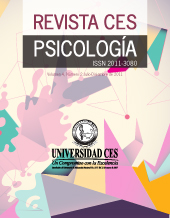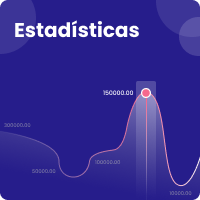Activación de Recursos en Psicoterapia. ¿Cómo se ha estudiado y qué sabemos?: Una revisión sistemática
DOI:
https://doi.org/10.21615/cesp.13.3.3Palabras clave:
Activación de Recursos, Cambio Terapéutico, Mecanismos Genéricos de Cambio, Psicoterapia, Revisión SistemáticaResumen
A partir de los primeros metaanálisis sobre efectividad en psicoterapia, Grawe (1997) abstrae teóricamente cuatro mecanismos transteóricos relacionados con el cambio, siendo el principal de ellos Activación de Recursos. Este mecanismo es entendido como el uso de las capacidades y disposición motivacional del paciente al servicio de un objetivo terapéutico, así como el ajuste de las intervenciones terapéuticas a dichos aspectos. Basado en una revisión sistemática de la literatura en inglés y español, el presente artículo discute resultados de distintos estudios empíricos, con el objetivo de esclarecer qué sabemos sobre la relación entre Activación de Recursos y el cambio en psicoterapia. La búsqueda de artículos no se restringió por año de publicación ni diseño metodológico, en tanto en el estudio reportado se hubiera evaluado el mecanismo Activación de Recursos y se aportara evidencia de su relación con una segunda variable. Los 14 estudios incluidos ofrecen evidencia mayoritariamente a favor de la relación entre Activación de Recursos y resultados terapéuticos, pero con dudas respecto de cómo y cuándo este mecanismo favorece, o incluso pudiera entorpecer el cambio. Estas dudas son discutidas a partir de la relación entre Activación de Recursos y distintas variables de proceso, así como de aspectos metodológicos de los estudios. La principal limitación de esta revisión guarda relación con la heterogeneidad metodológica de los estudios incluidos, sumado a la homogeneidad geográfico-cultural donde fueron desarrollados, lo que sugiere interpretar con cautela tanto la integración de la evidencia como su generalización, a la espera de nuevos estudios en distintos contextos.
Descargas
Referencias bibliográficas
Brockmann, J., Kirsch, H., Hatcher, R., Andreas, S., Benz, S., & Sammet, I. (2011). Dimensions of the Therapeutic Alliance from Patients' View - Development of the "Skala Therapeutische Allianz-Revised STA-R". Psychotherapie Psychosomatik Medizinische Psychologie, 61(5), 208-215. https://doi.org/10.1055/s-0030-1263142
Castronovo, M., Hirsch, H., & Hirsch, P. (s.f.). Guía y esquema gráfico para el uso de los recursos del consultante en terapia estratégica. Recuperado de http://www.enciclopediasaludmental.org.ar/trabajo.php?idt=14&idtt=39
Eysenck, H. J. (1994). Personality: Biological foundations. In P. A. Vernon (Ed.), The neuropsychology of individual differences. London: Academic Press. https://doi.org/10.1016/B978-0-12-718670-2.50011-6.
Flückiger, C., Caspar, F., Grosse Holtforth, M., & Willutzki, U. (2009). Working with patients’ strengths: A microprocess approach. Psychotherapy Research, 19(2), 213-223. https://doi.org/10.1080/10503300902755300
Flückiger, C., Del Re, A. C., Wampold, B. E., & Horvath, A. O. (2018). The alliance in adult psychotherapy: A meta-analytic synthesis. Psychotherapy, 55(4), 316–340. https://doi.org/10.1037/pst0000172
Flückiger, C., & Grosse Holtforth, M. (2008a). Ressourcenorientierte Mikroprozess Analyse (ROMA) - Ressourcendiagnostik und Ressourcenaktivierung im Therapieprozess. (Resource-Oriented Microproces Analysis – ROMA.) [Special issue]. Zeitschrift für Klinische Diagnostik und Evaluation, 1, 171–185.
Flückiger, C., & Grosse Holtforth, M. (2008b). Focusing the therapist’s attention on the patient’s strengths: A preliminary study to foster a mechanism of change in outpatient psychotherapy. Journal of Clinical Psychology, 64, 876-890. https://doi.org/10.1002/jclp.20493
Flückiger, C., Regli, D., Zwahlen, D., Hostettler, S., & Caspar, F. (2010). Der Berner Patienten- und Therapeutenstundenbogen 2000: Ein Instrument zur Erfassung von Therapieprozessen [The Bern Post Session Report for Patients and for Therapists 2000: An instrument to measure therapy processes]. Zeitschrift für Klinische Psychologie und Psychotherapie:Forschung und Praxis, 39(2), 71-79. https://doi.org/10.1026/1616-3443/a000015
Flückiger, C., Zinbarg, R., Znoj, H., & Ackert, M. (2014). Resource activation in generalized anxiety: An observer-based microprocess analysis of patients’ in-session outcomes. Psychotherapy, 51(4), 535–545. https://doi.org/10.1037/a0034119
Gelso, C. J., & Woodhouse, S. (2003). Toward a positive psychotherapy: Focus on human strength. En W. B. Walsh (Ed.), Counseling psychology and optimal human functioning (pp 171-198). NY: Erlbaum.
Gassmann, D., & Grawe, K. (2006). General change Mechanisms: The relation between problem activation and resource activation in successful and unsuccessful therapeutic interactions. Clinical Psychology and Psychotherapy, 13, 1–11. https://doi.org/10.1002/cpp.442
Grawe, K. (1997). Research-informed psychotherapy. Psychotherapy Research, 7, 1–19. https://doi.org/10.1080/10503309712331331843
Grawe K., Donati R., & Bernauer F. (1994). Psychotherapie im Wandel: von derKonfession zur Profession [The change of psychotherapy. From confession to profession]. Göttingen: Hogrefe.
Grawe, K., Regli, D., Smith, E., & Dick, A. (1999). Wirkfaktorenanalyse—ein Spektroskop für die Psychotherapie. Verhaltenstherapie und psychosoziale Praxis, 31, 201–225.
Harbin, J. M., Gelso, C. J., & Rojas, A. E. P. (2014). Therapist work with client strengths: Development and validation of a measure. The Counseling Psychologist, 42(3), 345–373. https://doi.org/10.1177/0011000012470570.
Hatcher, R. L., & Shannon, P. A. (2005). The patient’s collaborative alliance in therapy. unpublished manuscript.
Hirsch, H., Castronovo, M., & Santangelo, L. (2016). ¿Cuáles son los recursos externos al consultante que el terapeuta puede examinar? De Familias y Terapias, 41, 21-30.
Horvath, A. O., & Greenberg, L. (1986). The development of the Working Alliance Inventory. En L. S. Greenberg y W. M. Pisnsof, (Eds.), The Psychotherapeutic Process: A Research Handbook (pp. 529-556). Nueva York: Guilford.
Krause, M., & Altimir, C. (2016). Introduction: Current developments in psychotherapy process research. Estúdios de Psicologia, 37(2-3), 201-225. https://doi.org/10.1080/02109395.2016.1227574
Lambert, M. J., & Ogles, B. M. (2004). The efficacy and effectiveness of psychotherapy. In M. J. Lambert (Ed.), Bergin and Garfield’s handbook of psychotherapy and behavior change (5th ed.). New York: Wiley.
Lipsey, M. W., & Wilson, D. B. (2001). Practical meta-analysis. Thousand Oaks: Sage.
Lopez, S. (2008). Positive psychology: Exploring the best in people. Westport, CT: Praeger Publications.
MacNair-Semands, R. R., Ogrodniczuk, J. S., & Joyce, A. S. (2010). Structure and initial validation of a short form of the Therapeutic Factors Inventory. International Journal of Group Psychotherapy, 60(2), 245–281. https://doi.org/10.1521/ijgp.2010.60.2.245
Mander, J., Wittorf, A., Schlarb, A., Hautzinger, M., Zipfel, S., & Sammet, I. (2013). Change mechanisms in psychotherapy: Multiperspective assessment and relation to outcome. Psychotherapy Research, 23(1), 105–116. https://doi.org/10.1080/10503307.2012.744111
Mander, J., Wittorf, A., Klingberg, S., Teufel, M., Zipfel, S., & Sammet, I. (2014). The patient perspective on therapeutic change: The investigation of associations between stages of change and general mechanisms of change in psychotherapy research. Journal of Psychotherapy Integration, 24(2), 122–137. https://doi.org/10.1037/a0036976
Mander, J., Jacob, G., Götz, L., Sammet, I., Zipfel, S., & Teufel, M. (2015a). Associations between Grawe’s general mechanisms of change and Young’s early maladaptive schemas. Psychotherapy Research, 25(2), 249–262. https://doi.org/10.1080/10503307.2014.889330
Mander, J., Schlarb, A., Teufel, M., Keller, F., Hautzinger, M., Zipfel, S., … Sammet, I. (2015b). The Individual Therapy Process Questionnaire: Development and Validation of a Revised Measure to Evaluate General Change Mechanisms in Psychotherapy. Clinical Psychology and Psychotherapy, 22, 328-345. https://doi.org/10.1002/cpp.1892
Moher, D., Liberati, A., Tetzlaff, J., Altman, D.G., & The PRISMA Group. (2009). Preferred Reporting Items for Systematic Reviews and Meta-Analyses: The PRISMA Statement. Open Med, 3(3), 123-130.
Munder, T., Wilmers, F., Leonhart, R., Linster, H.W., & Barth, J. (2010). Working Alliance Inventory-Short Revised (WAI-SR): Psychometric properties in outpatients and inpatients. Clinical Psychology and Psychotherapy, 17(3), 231-239. https://doi.org/10.1002/cpp.658
Norcross, J. C., & Wampold, B. E. (2011). Evidence-based therapy relationships: Research conclusions and clinical practices. Psychotherapy, 48(1), 98–102. https://doi.org/10.1037/a0022161
Regli, D., & Grawe, K. (2000). Die Berner Stundenbogen Version 2000—ein Forschungsinstrument [The Bern postsession reports—Research instrument. Unpublished manuscript, University of Bern, Bern, Switzerland.
Schaller, G., Blanck, P., Vogel, E., Vonderlin, E., Bents, H., & Mander, J. (2018). Therapeutic processes in group therapy: Intersections between general change mechanisms and motivational stages of change from patient perspective, European Journal of Psychotherapy & Counselling, 20(3), 312-336. https://doi.org/10.1080/13642537.2018.1495247.
Scheel, M., Davis, C., & Henderson, J. (2012). Therapist use of client strengths: a qualitative study of positive processes. The Counseling Psychologist, 20(10) 1-36.
Sander, L., Zobel, I., Dykierek, P., & Schramm, E. (2013). Common Factors in the treatment of chronic depression. Comparison of 2 psychotherapy methods. Verhaltenstherapie, 22, 228–235. https://doi.org/10.1159/000345644
Seligman, M.E.P., & Csikszentmihalyi, M. (2000). Positive psychology: An introduction. American Psychologist, 55, 5-14.
Smith, M. L., & Glass, G. V. (1977). Meta-analysis of psychotherapy outcome studies. American Psychologist, 32, 752-760. https://doi.org/10.1037/0003-066X.32.9.752
Smith, E., & Grawe, K. (2003). What makes psycho-therapy sessions productive? A new approach to bridging the gap between process research and practice. Clinical Psychology and Psychotherapy, 10, 275– 285. https://doi.org/10.1002/cpp.377
Smith, E., & Grawe, K. (2005). Which therapeutic mechanism Works when? A step towards the formulation of empirically validated guidelines for therapists’ session-to-session decisions. Clinical Psychology and Psychotherapy, 12, 112–123. https://doi.org/10.1002/cpp.427
Stangier, U., Von Consbruch, K., Schramm, E., & Heidenreich, T. (2010). Common factors of cognitive therapy and interpersonal psychotherapy in the treatment of social phobia. Anxiety, Stress, & Coping, 23(3), 289-301. https://doi.org/10.1080/10615800903180239
Tarragona, M. (2006). Las Terapias Posmodernas: Una breve Introducción a la Terapia Colaborativa, la Terapia Narrativa y la Terapia Centrada en Soluciones. Psicología Conductual. 14(3) 511-532.
Tarragona, M. (2013). Psicología Positiva y Terapias Constructivas: Una Propuesta Integradora. Terapia psicológica, 31(1), 115-125.
Trösken, A. K., & Grawe, K. (2003). Das Berner Ressourceninventar—Instrumente zur Erfassung von Patientenressourcen aus der Selbst und Fremdbeurteilsperspektive [The Bern resource inventories—Instruments of assessing patients resources for self and observer report]. In H., Schemmel & J. Schaller (Eds.), Ressourcen. Ein Hand- und Lesebuch zur therapeutischen Arbeit (pp. 195–217). Tübingen, Germany: dgvt.
Vogel, E., Blanck, P., Bents, H., & Mander, J. (2016). Wirkfaktoren in der Gruppentherapie: Entwicklung und Validierung eines Fragebogens [Effective factors in group therapy: Development and validation of a questionnaire]. Psychotherapie, Psychosomatik, Medizinische Psychologie, 66(5), 170–179. https://doi.org/10.1055/s-0042-104495
von Consbruch, K., Flückiger, C., Stangier, U., Beutel, M., Herpertz, S., Hoyer, J… Wiltink, J. (2013). WIFA-k: Ein neues Messinstrument zur zeitökonomischen Erfassung allgemeiner Wirkfaktoren nach Grawe. [WIFA-k: A new instrument for a time-efficient assessment of common factors in psychotherapy]. Psychotherapie, Psychosomatik, Medizinische Psychologie, 63, 286–289. https://doi.org/10.1055/s-0032-1331206
Wampold, B., & Imel, Z. E. (2015). The great psychotherapy debate: The evidence for what makes psychotherapy work (2nd ed.). New York, NY: Routledge.
Young, J. E. (1990). Cognitive therapy for personality disorders: A schema-focused approach. Sarasota, FL: Professional Resource Exchange.
Znoj, H.-J., Messerli-Burgy, N., Tschopp, S., Weber, R., Christen, L., Christen, S., & Grawe, K. (2010). Psychotherapeutic process of cognitive_behavioral intervention in HIV-infected persons: Results from a controlled, randomized prospective clinical trial. Psychotherapy Research, 20(2), 203-213. https://doi.org/10.1080/10503300903246663
Descargas
Publicado
Cómo citar
Número
Sección
Licencia
Derechos de autor 2020 CES Psicología

Esta obra está bajo una licencia internacional Creative Commons Atribución-SinDerivadas 4.0.
Revista CES Psicología ISSN 2011 3080
Facultad de Psicología, Universidad CES Primera edición 2008. Última actualización Mayo 18 de 2022. Todos los derechos reservados. Hecho el depósito legal que exige la ley.
Se autoriza la reproducción total o parcial de los artículos citando la fuente y el autor. This publication may be reproduced by mentioning the source and the authors.
| Estadísticas de artículo | |
|---|---|
| Vistas de resúmenes | |
| Vistas de PDF | |
| Descargas de PDF | |
| Vistas de HTML | |
| Otras vistas | |




